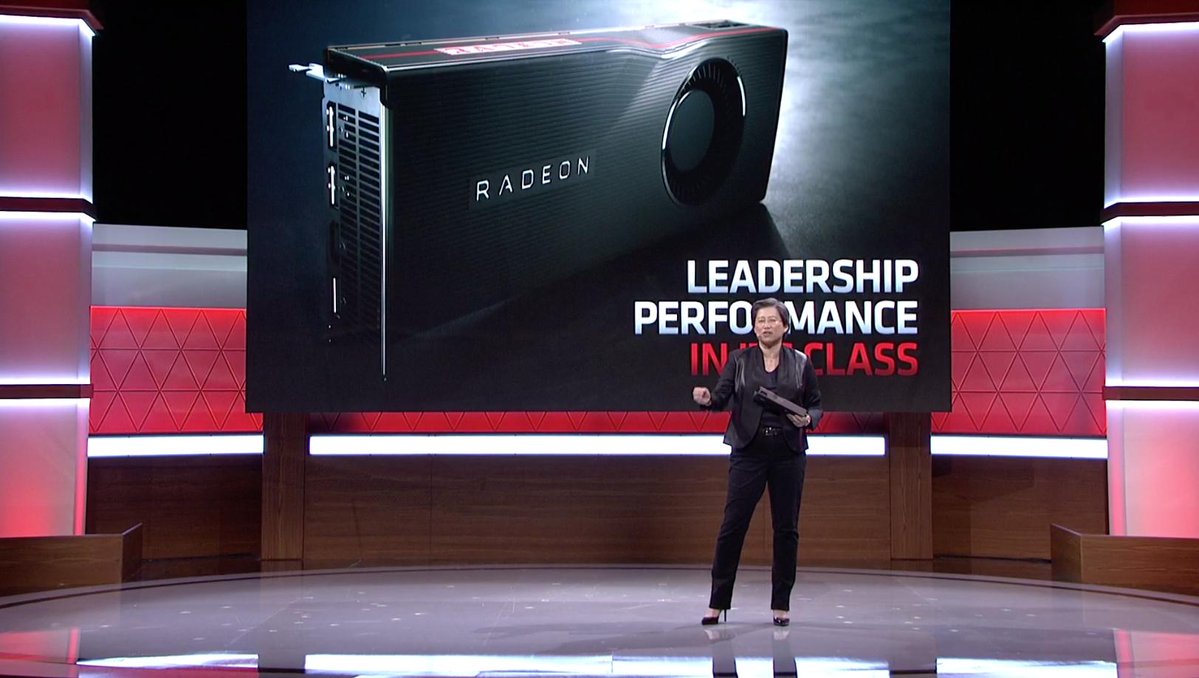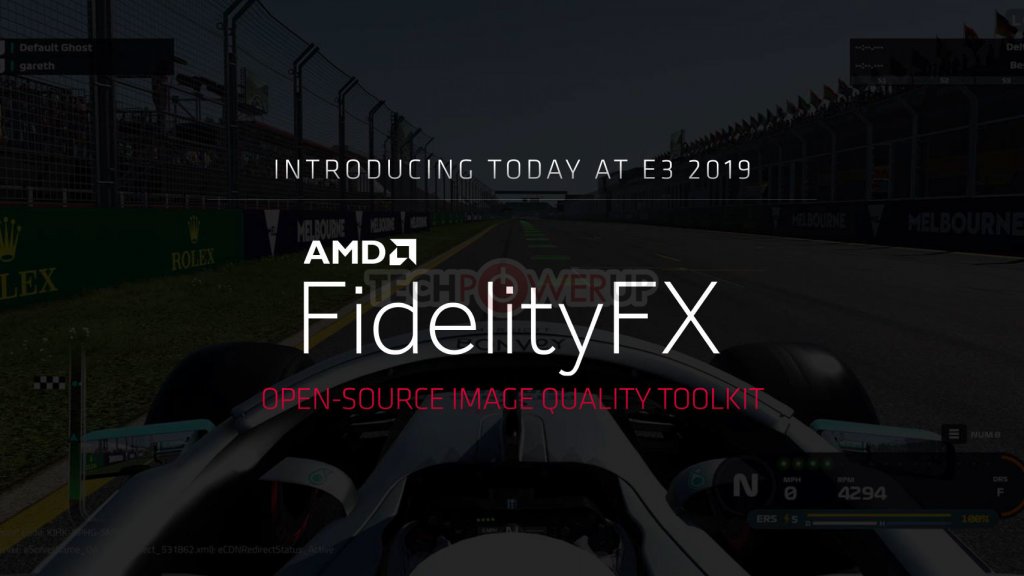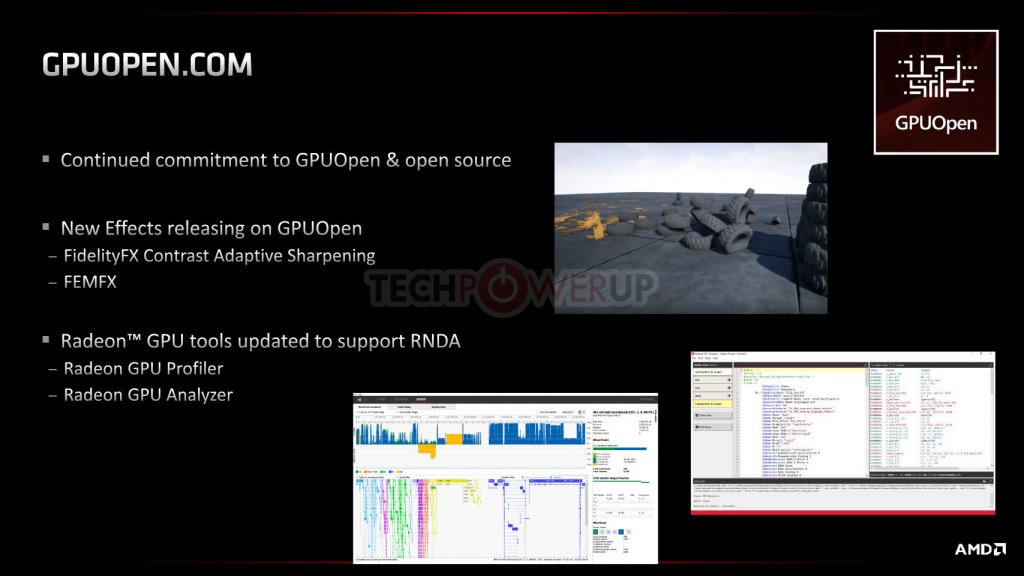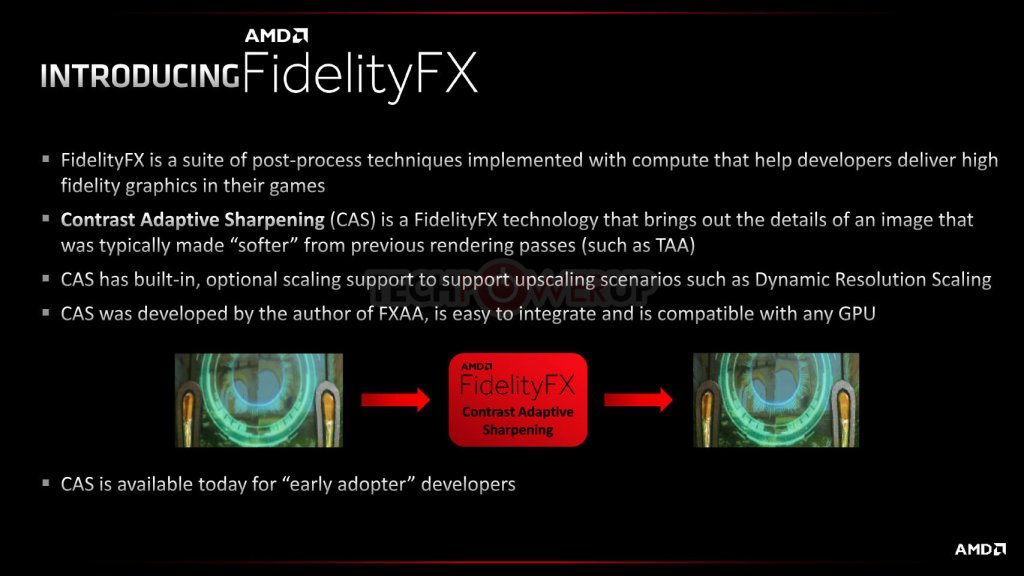
One of the most popular hardware discussions following E3 was the ever-ongoing battle between Nvidia and AMD, the two kingpins of graphics.
One quote in particular, which involved an Nvidia representative throwing shade at AMD, has made the rounds since then. This quote from Nvidia’s Tony Tamasi has been featured now in Reddit posts, news articles, and more, stating that Nvidia has been doing what AMD introduced this year as FidelityFX for a long time.
“AMD introduced a couple things we read about and heard about,” Tamasi said at E3. “Radeon Image Sharpening and FidelityFX… We’ve had that kind of functionality in Freestyle, with a bunch of other post processing effects, developed for quite some time.”
This has sparked an interesting discussion among hardware enthusiasts. What exactly is AMD’s FidelityFX, and how is it different from Nvidia’s Freestyle, if at all?
Fidelity as a selling point

FidelityFX was used as quite a large selling point for AMD at E3. In a stage presentation, Unity’s VP of graphics Natalya Tartarchuk stated that AMD’s new Fidelity software was needed for Unity’s engine to render graphics at next-generation GPU resolutions while maintaining good performance and quality. Nvidia clearly isn’t impressed by it, but AMD claims that Fidelity will allow games to run sharper, clearer, and all around prettier graphics, even when upscaled to massive resolutions.
But what actually is it? All of that marketing jargon makes it sound like Fidelity is some sort of hardware feature the new line of Radeon graphics cards will run. In actuality though, it’s software, and it can be run on all current-gen AMD tech, as well as the upcoming models. And technically it’s not even traditional software, it’s an open source software kit. The real software in play is called Contrast Adaptive Sharpening, or CAS. FidelityFX is just the toolkit that CAS comes in.
Defining CAS

So the real question shouldn’t be “What is AMD FidelityFX?” but instead, “What is CAS?” That’s a slightly easier question to answer, as we’ve taken away one layer of ambiguity already just by getting to the real tool.
CAS, as defined by AMD, is a sharpening tool used specifically for upscaling graphics. It sharpens images, which yes, is something that already exists, but it claims to be able to minimize aliasing and artifacts without affecting your hardware’s performance in a big way.
As you might recall, turning on Anti-Aliasing or Post-Processing in a game is typically a big decision. Without high-end GPUs, you can notice a significant downgrade in performance by enabling either one of those features. AMD is claiming that CAS provides clean anti-aliasing without hitting your machine where it hurts, which would, in fact, be a welcome upgrade.

CAS, as part of the FidelityFX toolkit, will be available to game developers on GPUOpen, AMD’s new open source website. Devs will be able to build their games with the CAS feature to further improve anti-aliasing as it is already. And Unity, as proudly stated by Tartarchuk at E3, will be one of those devs.
Comparing it to Nvidia Freestyle

To properly compare CAS to Freestyle, we have to also define Freestyle. It offers a suite of post-processing filters for gamers to plug into their games.
Using Freestyle, you can take away blue light from a game to go easy on your eyes in the dark, you can amp up sharpness, or you can force a colorblind mode of sorts. And those are just some of the many filters you can try. I’ve used Freestyle for quite some time, and I love it, but, even as someone who prefers Nvidia GPUs in my computer to AMD, I have to say that Nvidia was mistaken on this one.
Freestyle is a tool that offers post-processing filters. And that’s where the big difference lies—in the word “filter.”
Filter vs. Feature

Nvidia’s Freestyle is a great tool, and it sounds like AMD’s Fidelity is, too, but they’re nothing alike.
They are simply not the same product, nor are they pretending to be. This likely means that Nvidia’s Tamasi may have been a smidge misinformed when he made that bold claim: “We’ve had that kind of functionality in Freestyle for quite some time.”
That’s not necessarily a bad thing, though, because I was a little confused when I saw AMD’s E3 presentation, too. An E3 stage talk isn’t the best place to explain the inner workings of something like this, and those who saw the stage show were left with unanswered questions.
And thus, when a question about AMD’s new software was thrown on him, it’s likely Tamasi answered with his first impression, which was, essentially: “Well it looks like a post-processing thing. We do post-processing things already.” And again, there’s nothing really wrong with that statement.

To compare the two features, just so you can go off and tell your friends that you know more than them, here’s what you have to keep in mind:
- AMD’s FidelityFX is a software toolkit containing something called CAS. CAS is a feature that devs can build into their games to improve sharpness quality at higher resolutions, with minimal drawback on performance.
- Nvidia’s Freestyle has nothing to do with the development process. It’s all applied by a third party (Nvidia’s GeForce software) to a game after the game is already running. It’s the equivalent of applying a Snapchat filter to your game’s graphics. Useful? Yes, but still totally different.
